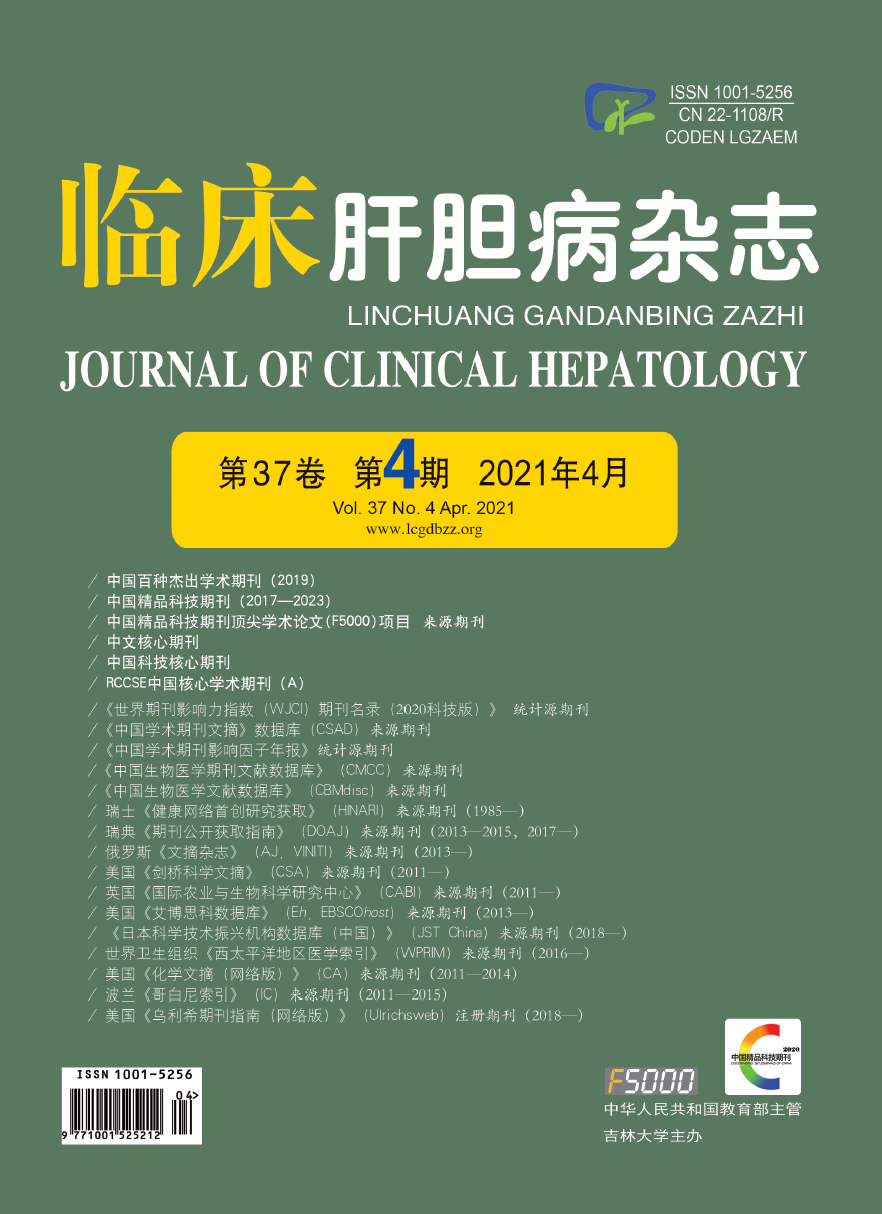| [1] |
BRAY F, FERLAY J, SOERJOMATARAM I, et al. Global cancer statistics 2018: GLOBOCAN estimates of incidence and mortality worldwide for 36 cancers in 185 countries[J]. CA Cancer J Clin, 2018, 68(6): 394-424. DOI: 10.3322/caac.21492. |
| [2] |
ZHOU Z, LIN X, LIN N, et al. Establishment and predictive value of clinical prediction model for the recurrence after resection of hepatocellular carcinoma[J/CD]. Chin J Hepat Surg(Electronic Edition), 2017, 6(3): 192-196. DOI: 10.3877/cma.j.issn.2095-3232.2017.03.010. |
| [3] |
|
| [4] |
LI B, SU H, CAO J, et al. CXCL13 rather than IL-31 is a potential indicator in patients with hepatocellular carcinoma[J]. Cytokine, 2017, 89: 91-97. DOI: 10.1016/j.cyto.2016.08.016. |
| [5] |
DUAN Z, GAO J, ZHANG L, et al. Phenotype and function of CXCR5 +CD45RA -CD4 + T cells were altered in HBV-related hepatocellular carcinoma and elevated serum CXCL13 predicted better prognosis[J]. Oncotarget, 2015, 6(42): 44239-44253. DOI: 10.18632/oncotarget.6235. |
| [6] |
BINDEA G, MLECNIK B, TOSOLINI M, et al. Spatiotemporal dynamics of intratumoral immune cells reveal the immune landscape in human cancer[J]. Immunity, 2013, 39(4): 782-795. DOI: 10.1016/j.immuni.2013.10.003. |
| [7] |
Ministry of Health of the People's Republic of China. Diagnosis, management, and treatment of hepatocellular carcinoma (V2011)[J]. J Clin Hepatol, 2011, 27(11): 1141-1159. DOI: 10.3969/j.issn.1001-5256.2011.11.004 |
| [8] |
LI CY. Expression and effect of CXCL 13 chemokine in hepatocellullar carcinoma[D]. Changchun: Jilin University, 2017.
李春艳. 趋化因子CXCL13在肝细胞癌中的表达及作用机制研究[D]. 长春: 吉林大学, 2017.
|
| [9] |
LI C, KANG D, SUN X, et al. The effect of C-X-C motif chemokine 13 on hepatocellular carcinoma associates with Wnt signaling[J]. Biomed Res Int, 2015, 2015: 345413. DOI: 10.1155/2015/345413. |
| [10] |
FÖRSTER R, MATTIS AE, KREMMER E, et al. A putative chemokine receptor, BLR1, directs B cell migration to defined lymphoid organs and specific anatomic compartments of the spleen[J]. Cell, 1996, 87(6): 1037-1047. DOI: 10.1016/s0092-8674(00)81798-5. |
| [11] |
KIM CH, ROTT LS, CLARK-LEWIS I, et al. Subspecialization of CXCR5 + T cells: B helper activity is focused in a germinal center-localized subset of CXCR5 + T cells[J]. J Exp Med, 2001, 193(12): 1373-1381. DOI: 10.1084/jem.193.12.1373. |
| [12] |
CUCCHETTI A, PISCAGLIA F, CATURELLI E, et al. Comparison of recurrence of hepatocellular carcinoma after resection in patients with cirrhosis to its occurrence in a surveilled cirrhotic population[J]. Ann Surg Oncol, 2009, 16(2): 413-422. DOI: 10.1245/s10434-008-0232-4. |
| [13] |
|
| [14] |
PAN YX, CHEN JC, FANG AP, et al. A nomogram predicting the recurrence of hepatocellular carcinoma in patients after laparoscopic hepatectomy[J]. Cancer Commun (Lond), 2019, 39(1): 55. DOI: 10.1186/s40880-019-0404-6. |
| [15] |
YE YJ, LIU B, CHEN W, et al. Prognosis and staging system analysis of hepatocellular carcinoma patients with negative serum alpha-fetoprotein[J]. J Clin Hepatol, 2019, 35(3): 535-541. DOI: 10.3969/j.issn.1001-5256.2019.03.017. |
| [16] |
LIU AX, WANG HQ, BO WT, et al. Clinical efficacy and prognostic factors analysis of hepatectomy for hepatocellular carcinoma[J]. Chin J Dig Surg, 2019, 18(4): 368-374. DOI: 10.3760/cma.j.issn.1673-9752.2019.04.012. |
| [17] |
|
| [18] |
Department of Medical Administration. National Health and Health Commission of the People's Republic of China. Guidelines for diagnosis and treatment of primary liver cancer in China (2019 edition)[J]. J Clin Hepatol, 2020, 36(2): 277-292. DOI: 10.3969/j.issn.1001 -5256.2020.02.007.
中华人民共和国国家卫生健康委员会医政医管局. 原发性肝癌诊疗规范(2019年版)[J]. 临床肝胆病杂志, 2020, 36(2): 277-292. DOI: 10.3969/j.issn.1001 -5256.2020.02.007.
|








 DownLoad:
DownLoad:
